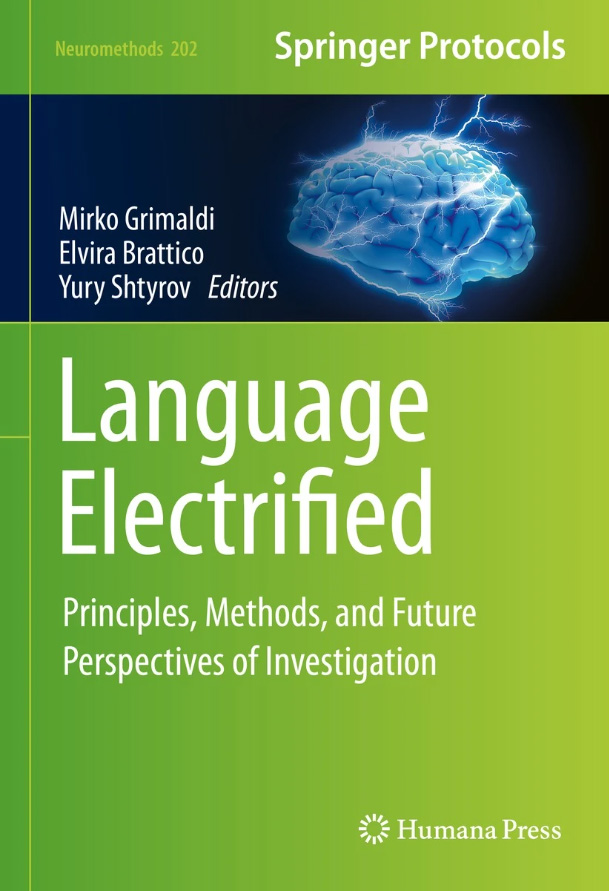New book published by CFIN/MIB scientists: “Language Electrified: Principles, Methods and Future Perspectives of Investigation”
A new Springer book on neurolinguistics has just been published online. The new book is edited by Mirko Grimaldi (University of Salento, Lecce, Italy), Music in the Brain Professor Elvira Brattico, and CFIN Professor Yury Shtyrov.

About the book:
Language, as a system we use to communicate, represents the brain’s biologically perfected machinery for converting thoughts (ideas, concepts, and reflections of both the outside world and our inner feelings) into words and sentences. Crucially, this process occurs in real time. How hundreds of billions of neurons within the dark of the skull control language and speech remains, in some respects, a mystery. To track such neural dynamics in time, we need to exploit physiological tools capable of following temporal patterns of neural activity on a fine-grain time scale. In parallel, it is necessary to begin to provide a real interdisciplinary academic background for scholars wishing to embark on this field of study.
Unlike many similar efforts, this book has been conceived as a hands-on tool offering the reader the possibility to progressively acquire principles, techniques, and methods necessary to pursue interdisciplinary research in a fascinating field intersecting linguistic and neuroscience. It focuses on neurophysiological methods and applications useful to track the high speed and rapid temporal dynamics of neural activity involved in language and speech. The chapters in this book are organized into four parts.
Part One discusses neural principles and tools for an effective approach to the field of investigation.
Part Two looks at the issues and perspectives concerned with the use of a range of neurophysiological technologies to investigate the neural computations of language and speech processes.
Part Three focuses on an in-depth exploration of the neural processes associated with the main types of linguistic information, ranging from phonemes and prosody to syntax, pragmatics, and figurative language.
Lastly, Part Four explores the phenomena that goes beyond the segments of basic linguistic units. In the Neuromethods series style, chapters include the kind of detail and key advice from the specialists needed to get successful results in your laboratory.
Cutting-edge and thorough, Language Electrified: Principles, Methods, and Future Perspectives of Investigation is a valuable resource that offers the necessary tool-box for all researchers and scientists interested in the challenging field of the neurophysiology of language and speech.
Read more at:
https://link.springer.com/book/10.1007/978-1-0716-3263-5
